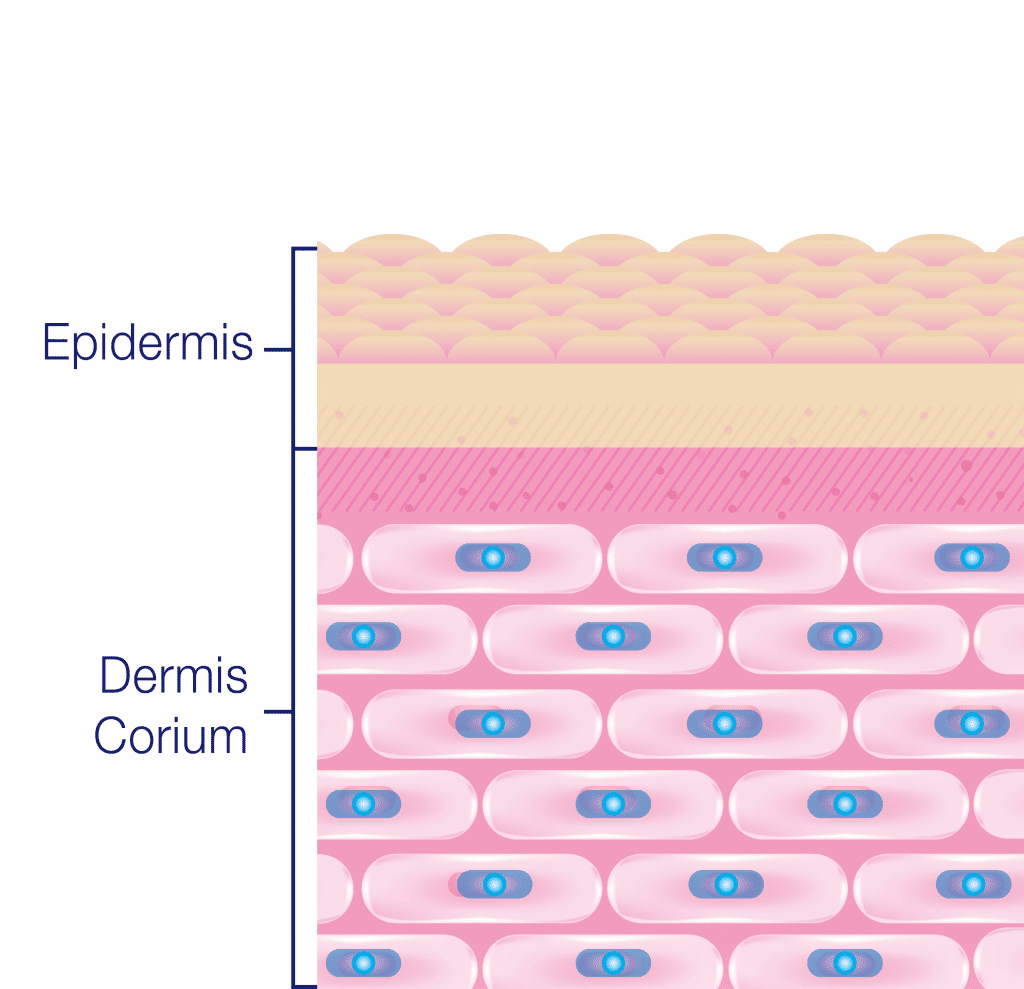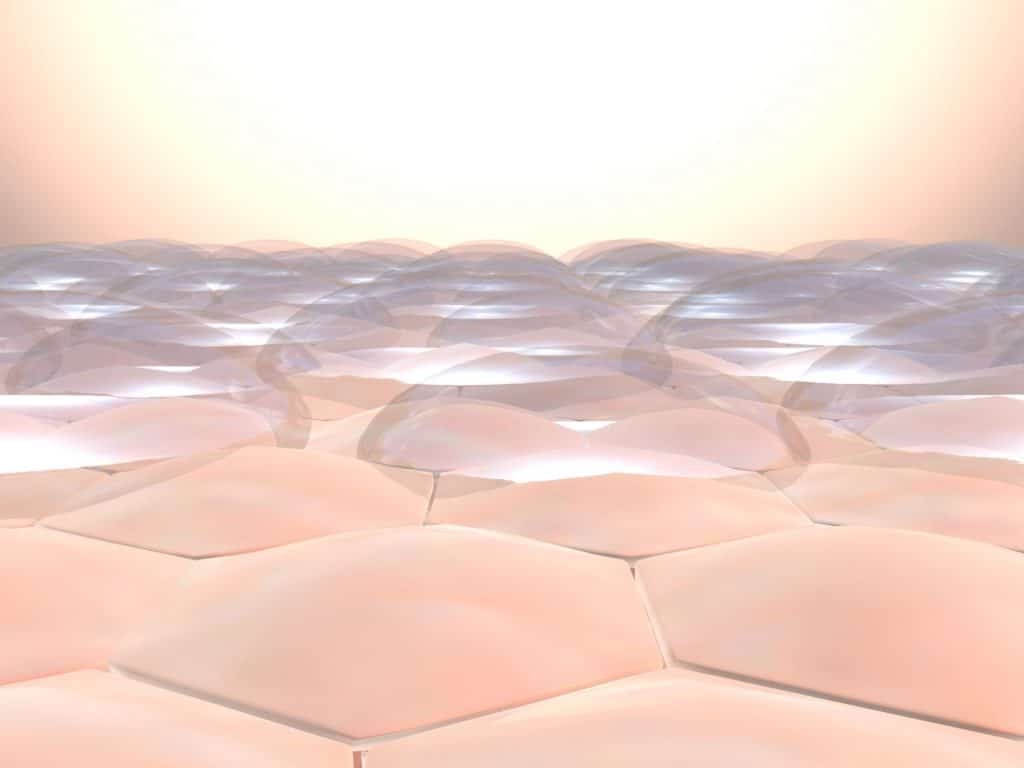

The skin is a vital and also the largest organ of our body. It not only protects us day after day from external influences such as heat, cold, wind, pathogens but also regulates the heat balance. In addition, the skin is considered a mirror of our soul. Skin problems can lead to the proverbial feeling of no longer being comfortable in one’s skin.
To better understand the function of the skin, it is important to know the structure of the skin.
The skin consists of 3 layers: Upper skin (epidermis); dermis (corium) and lower skin (subcutis).

The skin consists of 70% water. It releases moisture into the environment, but also absorbs moisture from it again. 2/3 of the moisture is stored in the dermis and 1/3 in the epidermis. Two factors are relevant for this regulated water balance.
Firstly, the skin’s natural moisture retention factors, which bind the water in the horny cells of the upper skin layer. The other is an intact skin protection barrier. On the one hand, this consists of the horny cells of the skin themselves, whose anchoring to each other is important. Furthermore, the lipids formed by the horny cells form a protective film around the horny cells on the skin surface and thus support the water-binding capacity. The skin is thus able to store moisture and regulate its water balance.
In order for the skin to function like a protective shield, the protective acid mantle (hydrolipid film) of our skin surface is essential. This consists of the body’s own components such as water, fat-splitting enzymes, horny cells, sebum and sweat and has a slightly acidic average pH value of 5.5. The protective acid mantle regulates the water balance of the skin, prevents too much moisture from escaping and also protects against external influences.
An intact protective acid mantle is the basis of life for the skin microbiome. This consists of a large number of different microorganisms (bacteria, viruses and fungi). The microbiome keeps the skin healthy by protecting it from pathogens or environmental influences. It does this best at a pH value of 5.5.

But what happens when the skin’s barrier function is no longer guaranteed?
Both external influences such as cold, heat, sun and water as well as internal factors such as nutrition, age or hormone fluctuations can lead to a weakened skin protection barrier.
The skin becomes sensitive and skin problems such as irritation, redness, dryness or feelings of tension can arise.